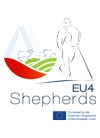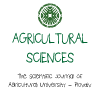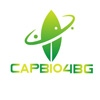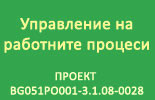Phytoremediation of contaminated soils
|
Course title: |
Phytoremediation of contaminated soils |
|
|
Course code: |
RZPCS |
|
|
ECTS: |
5 |
|
|
In-class hours |
Lectures: |
30 |
|
Laboratory work/Tutorials: |
30 |
|
|
Self-preparation hours |
Practical training: |
- |
|
Other: |
65 |
|
|
Total hours: |
125 |
|
|
Language: |
English |
|
|
Study cycle: |
Bachelor, Master, PhD |
|
|
Semester: |
Summer |
|
|
Faculty: |
Faculty of Plant Protection and Agriecology |
|
|
Name of the lecturer(s): |
Prof. Violina Angelova, PhD |
|
|
Mode of delivery: |
Face-to-face, distance learning |
|
|
Prerequisites: |
General knowledge of inorganic chemistry, organic chemistry and soil science |
|
|
Learning outcomes of the course unit: |
The course "Ecochemistry of heavy metals" is intended to acquaint students with the behavior of heavy metals in the soil - plant factors affecting the mobility of heavy metals, the influence of heavy metals on plant growth, the toxicity of metals, opportunities to reduce the amount of heavy metals in soils and methods of analysis of heavy metals in soil and plant samples. The course provides the study of heavy metals in ecosystems: origin, properties, behavior and dynamics in the soil - water – plant system. Special attention is paid to the movement of heavy metals from soil, water and air to the flora and fauna, and from there through the food chain to humans. In practical classes will be taught chemical analysis for determination of heavy metals in soil, water, waste and organic materials. During the laboratory exercises will be solved specific problems as the determination of heavy metals in soils and crop production. The information obtained will allow us to conduct environmental expertise of the studied objects. Learning Outcomes: The overall goal of the course is to study of heavy metals in terrestrial ecosystems, their properties, origin, behaviour and dynamics in the soil-water-plant continuum. Emphasis is put on the transfer of metals from soils or water to biota and the biomagnification in the food chain. Practical work is focussed on chemical analysis and speciation of metals in soils, solid waste and organic matter.
After completing the course, the students are expected to have acquired the following knowledge, skills and competencies: Insights: understanding - the legislation dealing with soil pollution - evaluate the behavior and reactions of heavy metals in natural and polluted ecosystems. - the behavior and transport of pollutants in the soil and - the different soil remediation techniques
Skills: being able to - interpret investigations dealing with soil pollution - evaluate the risk of a pollutant and - select a suitable soil remediation and management technique for a polluted site |
|
|
Course contents: |
LECTURES – 30 hours 1. Chemical properties of heavy metals. Geochemical origin of heavy metals in soils, pedogenesis and movement in the soil profile. Heavy metals contents in sediments and water. 2. Source of pollution. Natural sources, anthropogenic sources (industrial plants, mining plants, heat and power, agriculture, urbanization). 3. Chemical activity of heavy metals in soil and water. Effect of soil processes on behaviour (retention) of heavy metals in soil - adsorption on soil components (cation exchange, specific adsorption), co-precipitation, complexing with organic matter). 4. Mobility of heavy metals in soils. Influence of pH, organic matter, carbonates, clay minerals, redoxpotential on the behavior and chemical forms of heavy metals. 5. Transfer to plants and biomagnification. Heavy metals uptake by plants through absorption by the roots and the leaves. Movement of heavy metals in plants. Effect of other elements. 6. Influence of heavy metals on plant growth. Toxicity of metals (a chemical aspect of the problem). Biologically need some elements (copper, zinc) for their development. Sensitivity of plants to micronutrient deficiencies. Toxicity of heavy metals - definition of toxicity and phytotoxicity assessment. Phytotoxicity of the metals, resistance of plants to heavy metals (indicators, accumulators, hyperaacumulators) 7. Behaviour of some toxic metals (Pb, Cd, Hg). Sources, chemical behavior in soils, uptake by plants, translocation in plants, toxicity. 8. Behaviour of some toxic non-metals (As, Se). Sources, chemical behavior in soils, uptake by plants, translocation in plants, toxicity. 9. Chemical-analytical assessment of the content of heavy metals in soil, water and plants. Types of analysis. 9.1. Methods for analysis of heavy metals in soils and plant samples: Preparation of test samples - sampling, sample preparation (drying, crushing, storage), opportunities for contamination and errors in sample preparation for analysis, standard samples and materials. 9.2. Methods for determination of heavy metals in soils, waters, plants – atomic absorption, atomic emission. 9.3. Types of chemical analyzes. 9.3.1. Analysis of soil samples: Determination of total content of heavy metals in soils (acid digestion, alkali fusion, pseudo-total analysis). Procedures for digestion with strong acids, microwave mineralization. Determining the form of heavy metals in soil - use of successive extraction schemes (fractionation of soil). Types exctractants assessment of available forms (mobile forms) of heavy metals on plants. 9.3.2. Analysis of plant samples - determination of heavy metals by acid, dry mineralization and microwave mineralization. 9.3.3. Analysis of water samples. 10. Opportunities and ways to reduce the phytotoxicity of heavy metals in soils. Use of biological, physical and chemical methods for purification of soil heavy metals. 11. Phytoremediation. Use of hyperaccumulators to clean the soil of heavy metals - opportunities, problems. 12. Standards and regulations. Legal documents for the content of heavy metals in soils, waters, plants, foods (ISO standards).
LABORATORY CLASSES – 24 hours Sampling and preparation of soil and plant samples. Preparation of the soil and plant samples. 2. Determination of heavy metals in soil, water and plant samples by AAS and ICP. Introduction to equipment. Preparation of standards. The calibration graph. Determination of lead, cadmium and zinc in prepared to analyze soil and plant samples. Calculation of results. 3. Development of soil samples to determine the total content of heavy metals. Acid digestion with a mixture of acids, HF. Pseudo-total analysis - decomposition with a mixture of acids without HF and microwave mineralization. Comparing the results obtained 4. Sample preparation of soil samples to determine the forms of heavy metals in soil. Determination of exchange forms, carbonate bound, oxide bound, organic bound and residual forms with extraction schemes. Comparing the results obtained. 5. Sample preparation of soil samples to determine the available forms of heavy metals by different extractants. Determination of mobile forms by neutral salts (0.1 M NaNO3, 1M MgCl2), weak acids (acetic acid and / or ammonium acetate (1 M NH4OAc, pH 4.8) and chelating agents (DTPA, EDTA). Comparing the results obtained. 6. Determination of heavy metals in water, wine and beer. 7. Sample preparation of plant samples for the determination of heavy metals. Acid decomposition. Dry ashing Microwave digestion. Comparing the results obtained. 8. Mathematical evaluation of the movement of heavy metals from soil to plants. Assessment of soil contamination by calculating the coefficient RTE. Evaluation of accumulation of metals from the atmosphere by calculating the coefficient AAF. Comparing the accumulation and distribution of heavy metals in different ecosystems by calculating the concentration factor (CF).
SEMINARS - 6 hours 1. Discussion of the individual projects of behaviour and risk of heavy metals. 2. Discussion of the individual projects of analytical methods for heavy metal determination in soils, plants and food. 3. Discussion of the individual projects about remediation and management techniques (ex-situ; in-situ, soil washing, phytoremediation). |
|
|
Recommended or required reading: |
1. I. Mirsal. Soil pollution – origin, monitoring and remediation. Springer, 2008. 2. A. Kabata-Pendias, A. B. Mukherjee. Trace elements from soil to human. Springer, 2007. 3. A. Kabata –Pendias, H. Pendias. Trace elements in soils and plants. CRS Press, 2001. |
|
|
Planned learning activities and teaching methods: |
Monological explanation (lecture, presentation,briefing, tutorials), Dialogue methods (conversation,discussion,brainstorming) |
|
|
Assessment methods and criteria: |
Exercises evaluation, Written exam All students are required to have read the material in advance and be present during all lectures. No credit will be given without participating in class! The students will work on an individual basis under the supervision of the academic advisor so that the best possible learning outcomes are ensured. The seminars consist of each student’s individual 5 – 10 min presentation and a discussion. The presentation topics will be given in advance. Tests will be given in verbal and written form over the material from the seminars (student presentations) and the practical training (there will be 10 – minute tests before some practical training). If the student receives a grade under 3, the student will not be allowed to stay for the practical training. The final grade will consist of the practical final exam – 25%, the individual project – 25%, and the final theory exam – 50%. If the student receives a grade of 2 in any of the first two components of the final grade, the student will not be allowed to the final theory exam and will fail the class. The final theory exam is in written form. Forms of self–training (non- auditoria’s work) Individual project- 30 hours for preparation The students receive individual assignments at the beginning of the semester. The volume of the presentation – 5-8 pages (mostly tables and figures) – 5-10 minutes presentation during the seminars (with discussion). |
|
 - Събития по случай 80-я юбилей на АУ
- Събития по случай 80-я юбилей на АУ











